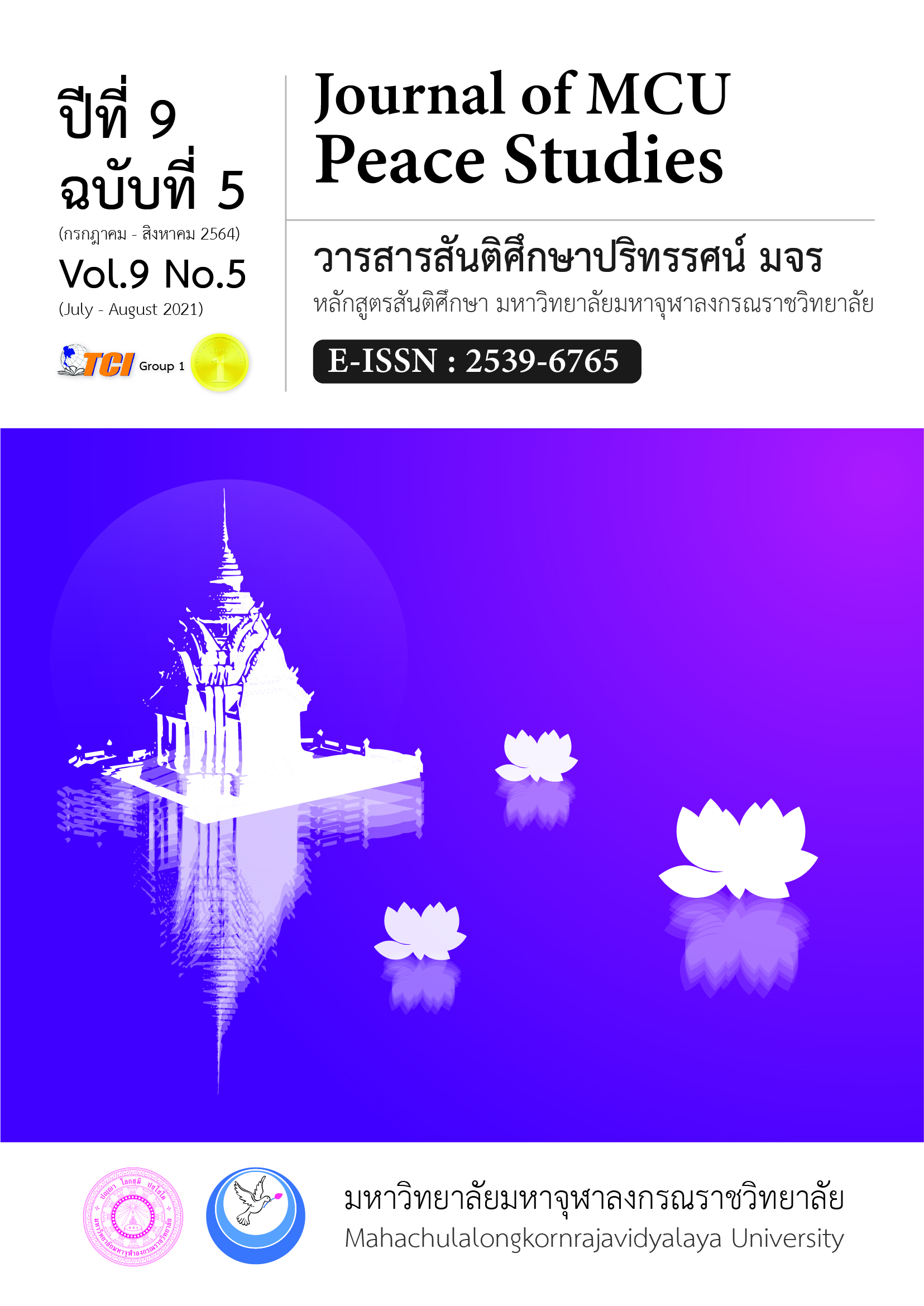การพัฒนาตัวแบบจำลองในการวางแผนการบริหารหนี้ อย่างมีประสิทธิผลของธนาคารออมสินเขตควบคุมและบริหารหนี้ภาค 11
Main Article Content
บทคัดย่อ
บทความนี้มีวัตถุประสงค์ 1) เพื่อสำรวจข้อมูลทั่วไปของลูกหนี้ที่ไม่ก่อให้เกิดรายได้ สาเหตุของการเกิดหนี้ค้างชำระ แนวทางการแก้ไขปัญหาหนี้ค้างชำระและสิ่งที่ต้องการให้ธนาคารช่วยเหลือ ที่อยู่ภายใต้การดูแลของธนาคารออมสินเขตควบคุมและบริหารหนี้ภาค 11 2) เพื่อวัดระดับทักษะทางการเงินของกลุ่มลูกหนี้ ที่ไม่ก่อให้เกิดรายได้ ที่อยู่ภายใต้การดูแลของธนาคารออมสินเขตควบคุมและบริหารหนี้ภาค 11 3) เพื่อวิเคราะห์ปัจจัยสำคัญที่ส่งผลต่อการวางแผนการบริหารหนี้ของธนาคารออมสินเขตควบคุมและบริหารหนี้ภาค 11 และ 4) เพื่อพัฒนาตัวแบบจำลองในการวางแผนการบริหารหนี้อย่างมีประสิทธิผลของธนาคารออมสินเขตควบคุมและบริหารหนี้ภาค 11 ภายใต้การวิจัยเชิงปริมาณ กลุ่มตัวอย่างที่ใช้ในการวิจัย คือ ลูกหนี้ที่ไม่ก่อให้เกิดรายได้ ที่อยู่ภายใต้การดูแลของธนาคารออมสินเขตควบคุมและบริหารหนี้ภาค 11 จำนวน 393 คน เครื่องมือที่ใช้ในการวิจัย คือ แบบสอบถาม สถิติที่ใช้ในการวิเคราะห์ข้อมูล ได้แก่ จำนวน ค่าร้อยละ ค่าเฉลี่ย ส่วนเบี่ยงเบนมาตรฐาน การวิเคราะห์องค์ประกอบเชิงยืนยัน และการวิเคราะห์โมเดลสมการโครงสร้าง ผลการวิจัยพบว่า โมเดลสมการโครงสร้างการวางแผนการบริหารหนี้อย่างมีประสิทธิผลของธนาคารออมสินเขตควบคุมและบริหารหนี้ภาค 11 มีความสอดคล้องกับข้อมูลเชิงประจักษ์ และพบว่าปัจจัยด้านธนาคาร ปัจจัยด้านการวิเคราะห์สินเชื่อ และปัจจัยภายนอกมีอิทธิพลทางตรงเชิงบวกต่อการวางแผนการบริหารหนี้และได้นำเสนอรูปแบบการวางแผนการบริหารหนี้อย่างมีประสิทธิผลของธนาคารออมสินเขตควบคุมและบริหารหนี้ภาค 11 โดยใช้เครื่องมือบริหารเป้าหมายแบบวัตถุประสงค์และผลลัพธ์ที่สำคัญ
Article Details
ทัศนะและความคิดเห็นที่ปรากฏในบทความในวารสาร ถือเป็นความรับผิดชอบของผู้เขียนบทความนั้น และไม่ถือเป็นทัศนะและความรับผิดชอบของกองบรรณาธิการ ยินยอมว่าบทความเป็นลิขสิทธิ์ของวารสาร
เอกสารอ้างอิง
Azeem, et al. (2017). Reasons and Effects of Non-Performing Loans in the Banking Industry of Pakistan. European Journal of Business and management, 9(4), 41-49.
Bank of Thailand. (2016). The corporate governance of Specialized Financial Institutions: SFIs. Retrieved February 12, 2020, from https://www.bot.or.th/Thai/FinancialInstitutions/PruReg_HB/Pages/SFIs.aspx
Bank of Thailand. (2016). The result of financial literacy 2016. Retrieved February 12, 2020, from https://www.bot.or.th/Thai/AboutBOT/Activities/Documents
Bank of Thailand. (2019). The resolve of Bank of Thailand on household debt. Retrieved February 20, 2020, from https://www.bot.or.th/Thai/ResearchAndPublications/Report/Pages/AnnualReport2018
Dechanubeksa, P. (2016). Credit analysis and business credit trend. Humanities and social sciences, 10(1), 39-46.
Doerr, J. (2019). Measure What Matters by OKRs. Bangkok: SE-EDUCATION company limited.
Mehmood A., Hidthiir M., & Mat Nor, A. (2019). The impact of external factors on stress banking assets: An evidence from Pakistani Conventional banks. Journal of Economics and Sustainability, 2(1), 11-21.
Mesayan, W. (2010). Non - performing loans collection of the Government Savings Bank Regional Office 7. Faculty of Economics. Chiangmai University.
Msigwa, C. (2013). Factors affecting non-performing loans in Banking industry: A case of KCB Bank (Tanzania) Limited. (Doctoral Dissertation). Mzumbe University. Morogoro.
Nazaj, S., & Meka, E. (2014). Bank Competition in Transition Economies: The Case of Albania. Department of Finance Faculty of Economics. European University of Tirana.
Office of the National Economic and Social Development Council. (2019). Thai Economic Performance in quarter 4 2018. Retrieved February 20, 2020, from https://www.nesdc.go.th/main.php?filename=QGDP_report
Sanjeev, G. (2007). Bankers’ Perceptions on Causes of Bad Loans in Banks. Journal of Management Research, 2, 40-46.
Sincharu, T. (2020). The research and statistic data analysis by SPSS and AMOS. (18th ed.). Bangkok: Business R and D.
State Enterprise Policy Office. (2018). Thai Economic Performance in quarter 4 2018. Retrieved February 20, 2020, from https://www.nesdc.go.th/main.php?filename=QGDP_report
State Enterprise Policy Office. (2018). Financial statements of State Enterprise. Retrieved January 10, 2020, from http://www.sepo.go.th/document
Suzuki, Y., & Adhikary, B. (2010). A bank rent approach to understanding the development of the banking system in Bangladesh. Journal of Contemporary South Asia, 18(2), 155-173.
The Secretariat of the Cabinet. (2 014). The corporate governance of Specialized Financial Institutions: SFIs. The cabinet Resolution December 2, 2014.
The Government Savings Bank. (2017). The history of The Government Savings Bank. Retrieved January 10, 2020, from https://www.gsb.or.th/about-us/history-bank.aspx
The Government Savings Bank. ( 2 019). Data of branch management. Report of branch management, 1(1).
The Government Saving bank region office 11. (2019). The overall operation of The Government Saving bank region office 11 in 2019. The overall operation report of The Government Saving bank region office 11.
Traver, J. (2019). The 5C’s of Credit: What Banks and Lenders actually look for. Credit scores and reports, Personal Finance.
Wanitbancha, K. (2019). Advance statistical analysis by SPSS for windows. (14th ed.). Bangkok: Chulabook center.
Wanitbancha, K. (2014). Structural Equation Modeling analysis by AMOS. (4th ed.). Bangkok: Chulabook center.
Wodtke, C. (2016). OKR Radical Focus. Bangkok: SE-EDUCATION company limited.


